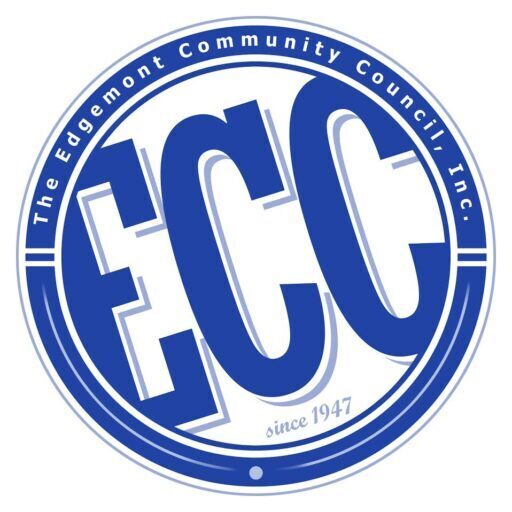 The Town’s Building Inspector held Monday that even though the site is nearly a mile from the nearest state or county road – a town prerequisite for noise and safety reasons — a developer seeking to build a huge four-story 70,000 square foot 80-unit assisted living facility on the former site of the Sprainbrook Nursery at the corner of Underhill and Sprain Roads in Edgemont does not need a variance because of a newly discovered — and never used — 60-year old abandoned state “right-of-way” adjacent to the property that leads nowhere.
The Town’s Building Inspector held Monday that even though the site is nearly a mile from the nearest state or county road – a town prerequisite for noise and safety reasons — a developer seeking to build a huge four-story 70,000 square foot 80-unit assisted living facility on the former site of the Sprainbrook Nursery at the corner of Underhill and Sprain Roads in Edgemont does not need a variance because of a newly discovered — and never used — 60-year old abandoned state “right-of-way” adjacent to the property that leads nowhere.
Under the town’s zoning ordinance, adopted two years ago, assisted living facilities were permitted to be built in residential neighborhoods in unincorporated Greenburgh, including Edgemont, provided they were on minimum four-acre lots and, for public safety and noise reasons, “must” be within 200 feet of a state or county “right of way.”
In making his determination, building inspector John Lucido made no mention of state law declaring “abandoned” all state “rights of way” not used after six years,.
He also appears to have ignored the town’s own map, filed with the state just two years ago, which never included the nursery property as a potential site for an assisted living facility, as well as the town’s own legally binding findings statement approved just before the assisted living ordinance was passed, which said, “The inclusion of the proximity of potential sites to State or County Roads other than Parkways, into the criteria, seeks to limit additional or excessive traffic within established residential neighborhoods, while insuring safe emergency and other vehicular and pedestrian access.”
Mr. Lucido relied instead on a July 9, 2015 email from the New York State Department of Transporation which confirmed that it acquired in the 1960s a “parcel” of land on the Sprainbrook property to construct an exit ramp off the Sprain Parkway onto Underhill Road.
The state’s email, however, makes no mention of there being a state “right of way”anymore on the property. Instead, it states only “The state seems to have acquired the parcel along Underhill Rd. during construction project of the Sprain Parkway.” The email nowhere mentions the term “right of way” and merely claims rights associated with the state being a landowner.
The failure of the NYSDOT to claim it still holds a “right of way” is significant because under State Highway Law Section 205, “every public right of way that shall not have been used for [six years] shall be deemed abandoned as a right of way.”
“All that exists today of this so-called state “right of way” is a narrow strip of state-owned land that leads nowhere,” said ECC president Bob Bernstein. “Mr. Lucido’s determination that such land ownership nevertheless qualifies as a state “right of way” for noise and safety purposes within the meaning of the town law authorizing assisted living facilities effectively turns the town’s law on its head.
Town attorney Tim Lewis said at last Wednesday’s town board meeting that all of these points, including State Highway Law Section 205, which the ECC made public on its website on June 27, had in fact already been presented to Mr. Lucido for his consideration. However, his determination made no mention of any of them.
Mr. Lucido is political supporter of Town Supervisor Paul Feiner, who contributes financially to his campaigns and solicits signatures to get him on the ballot. Mr. Feiner has lobbied on behalf of the developer here, Shelbourne Senior Living Services LLC by inviting them to two town board work sessions and using the town’s e-mail list and website to promote the project. He also arranged private meetings between the developer and neighboring homeowners. Mr. Feiner nevertheless insists he is “undecided.”
Among the things Mr. Lucido omitted in his opinion was any mention of the map prepared by town staff which shows that the Town Board never considered the Sprainbrook site as a potential site for an assisted living facility.
Ironically, Mr. Lucido was assisted in preparing his findings by Garrett Duquesne, the town’s planning commissioner, who helped draw up the state-filed map that didn’t include the Sprainbrook site.
In its findings statement two years ago, the Town Board stated:
“Town staff produced a map (Exhibit A) that shows all properties with a minimum of four (4) acres that are within 200 ft. of and have access to (direct or via a side street) a State or County Road (other than Parkways and Interstate Highways) that have the potential to allow for assisted living facilities in the unincorporated portion of the Town of Greenburgh. This map was used by Town Board to identify where other assisted living facilities might be entertained in the future and was analyzed and discussed at length by the Town Board in its decision on the special permit legislation.”
Mr. Lucido’s ruling thus permits an assisted living facility to be located at a site that, by the Town’s own admission, which Mr. Lucido ignored, was not only not within 200 feet of a state or county road, but that the Town Board never analyzed or discussed as required by state law.
The Shelbourne ruling quickly set off alarm bells among Edgemont residents who have been concerned for years about a lack of control over zoning and planning within their community and comes at a time in relations between Edgemont and The Town when the Town is considering whether to adopt a comprehensive plan that could have serious ramifications for Edgemont property owners.
This is also not the first time that the Town has misconstrued its zoning law to allow a use in Edgemont that is otherwise not permitted. Several years ago, because of a mistake the Town made in its zoning map, the Town initially sided with a developer that sought to construct multifamily housing adjacent to the Greenburgh Nature Center off Dromore Road, even though the property had always been zoned only for single family homes. The Dromore situation led to litigation which is still before the courts.
Here, however, by ignoring the purpose and intent of the Town’s new law governing assisted living facilities, Mr. Lucido’s opinion suggests that even if the proposed comprehensive plan were revised to eliminate such matters as the proposed development of hundreds of apartments along Central Avenue, town officials could with the stroke of a pen simply allow that which the comprehensive plan and the Town’s own zoning code do not allow – if town officials deem such measures to be in their best interests, even if not necessarily in Edgemont’s.
As a result of Mr. Lucido’s ruling, Shelbourne has withdrawn its application for a variance before with the Zoning Board of Appeals The ECC had previously notified the ZBA that because the site was not within the mandated 200 feet of a state or county “right of way,” the site itself was not permitted for use as an assisted living facility and could not legally qualify for a so-called “use variance.” Mr. Lucido’s ruling thus disposes of the ECC’s argument and Shelbourne has accordingly withdrawn its application for a zoning variance.
The next step in the process for Shelbourne is to get a report and recommendation from the Planning Board on its application to the Town Board for two special permits that will be needed before construction may begin.
The planning board will be holding its first public hearing on these applications tonight.
The first special permit is to allow the state “right of way” land to be included within the Sprainbrook property site because without it, the application does not meet the minimum four-acre requirement. Under the town code, however, no such special permit may be granted unless the Town itself requested that the property owner grant the state the “right of way” at no cost. Here, however, there is no such evidence that the Town ever did any such thing. Without such evidence, Shelbourne would have to get a variance from the Zoning Board to allow construction on a site that does not meet the minimum four-acre requirement.
The second special permit is for the assisted living facility itself. Here, it is difficult to predict what the Town Board will do. It is possible that the Town Board could, based on the legal issues which Mr. Lucido ignored, disagree with Mr. Lucido’s conclusion that “right of way” requirement is satisfied; the Town Board also has the right to reject an application for an assisted living facility if it concludes that such application will have “an adverse impact upon the Town.”
The town’s ordinance was originally supposed to read “state or county “road” – and all state-required environmental reports and maps on the proposed zoning change expressly stated state or county “road” – but the town board decided at the last minute – and without public notice or public hearing — to change the language from “road” to “right of way.”
The change was made because the developer who drafted the assisted living legislation for his client did not realize that the property — a four acre site off Benedict Avenue near Tarrytown — was not within 200 feet of a state or county road — but was within 200 feet of a state or county “right of way.”
Ironically, the same lawyer that represented the developer in that case two years ago is now proposing legislation on behalf of Game On to allow large commercial recreational facilities in residential neighborhoods.

